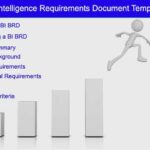The Best Fluffy Pancakes recipe you will fall in love with. Full of tips and tricks to help you make the best pancakes.
Introduction to Business Intelligence
In today’s data-driven world, businesses are constantly seeking ways to gain a competitive edge. One powerful solution that has emerged is business intelligence. This article provides a comprehensive overview of business intelligence, its importance, benefits, key components, tools, examples, challenges, best practices, and future trends.
What is Business Intelligence?
Business intelligence (BI) refers to the strategies, technologies, and practices used to analyze and transform raw data into actionable insights for informed decision-making. It involves collecting, storing, and analyzing vast amounts of data from various sources, such as internal databases, customer interactions, market trends, and social media.

Importance of Business Intelligence
Business intelligence plays a crucial role in modern organizations by providing valuable insights into market trends, customer behavior, operational efficiency, and strategic planning. It empowers businesses to make data-driven decisions, identify opportunities, mitigate risks, optimize processes, and improve overall performance.
Benefits of Implementing Business Intelligence
- Enhanced Decision-Making: Business intelligence enables decision-makers to access accurate, up-to-date information, leading to more informed and timely decisions.
- Competitive Advantage: By analyzing data from multiple sources, businesses can identify market trends, customer preferences, and competitor strategies, gaining a competitive edge.
- Improved Operational Efficiency: BI helps optimize processes, streamline workflows, and identify bottlenecks, leading to increased efficiency and cost savings.
- Enhanced Customer Experience: By understanding customer behavior and preferences, businesses can personalize their offerings, provide better customer service, and increase customer satisfaction.
Key Components of Business Intelligence
- Data Integration: Business intelligence relies on integrating data from various sources, such as databases, spreadsheets, CRM systems, and external APIs.
- Data Warehousing: Data warehouses serve as central repositories that store and organize large volumes of structured and unstructured data for analysis.
- Data Analysis: Business intelligence involves various analytical techniques, such as data mining, statistical analysis, and predictive modeling, to uncover patterns and insights.
- Data Visualization: Visual representations, such as charts, graphs, and dashboards, help users understand complex data and communicate insights effectively.
Business Intelligence Tools and Technologies
There are numerous tools and technologies available for business intelligence, ranging from basic spreadsheet software to advanced analytics platforms. Some popular ones include:
- Tableau: A powerful data visualization tool that helps users create interactive dashboards and reports.
- Power BI: Microsoft’s business analytics tool that allows users to visualize and share insights from their data.
- QlikView: A self-service BI platform that enables users to explore data, create visualizations, and build interactive applications.
- IBM Cognos: A comprehensive BI suite that provides capabilities for reporting, analysis, and performance management.
Examples of Business Intelligence in Action
Business intelligence is widely used across industries to drive strategic decision-making. Here are a few examples:
- Retail: Retailers use BI to analyze sales data, identify popular products, optimize inventory levels, and create targeted marketing campaigns.
- Healthcare: BI helps healthcare organizations analyze patient data, identify trends, improve clinical outcomes, and optimize resource allocation.
- Finance: Financial institutions leverage BI to monitor market trends, assess risk, detect fraud, and make data-driven investment decisions.
- Manufacturing: BI enables manufacturers to monitor production processes, optimize supply chain operations, and identify areas for cost reduction.
Business Intelligence in Different Industries
Business intelligence has become an integral part of various industries, including:
- E-commerce: BI helps online retailers track customer behavior, optimize conversion rates, and personalize the shopping experience.
- Hospitality: Hotels and resorts use BI to analyze guest preferences, manage bookings, and improve revenue management.
- Telecom: Telecommunication companies leverage BI to analyze network performance, understand customer usage patterns, and improve service offerings.
- Education: Educational institutions utilize BI to monitor student performance, analyze enrollment trends, and optimize resource allocation.
Challenges in Implementing Business Intelligence
While the benefits of business intelligence are significant, implementing a successful BI strategy can be challenging. Some common challenges include:
- Data Quality: BI heavily relies on accurate and reliable data. Ensuring data quality and consistency across multiple sources can be complex.
- Data Governance: Establishing data governance policies and processes is crucial to maintain data integrity, security, and compliance.
- User Adoption: Encouraging users to embrace BI tools and analytics requires proper training, support, and a user-friendly interface.
- Scalability: As data volumes grow, organizations must ensure their BI infrastructure can handle increasing data processing and storage demands.
Best Practices for Successful Business Intelligence Implementation
To ensure a successful business intelligence implementation, consider the following best practices:
- Define Clear Goals: Clearly outline the objectives and goals of your BI initiative to align with the organization’s strategic priorities.
- Data Quality and Governance: Establish data quality standards, implement data governance practices, and ensure data privacy and security.
- User Training and Support: Provide comprehensive training and ongoing support to users to maximize their understanding and adoption of BI tools.
- Agile Approach: Adopt an iterative and agile approach to BI implementation, focusing on delivering quick wins and continuous improvement.
Future Trends in Business Intelligence
Business intelligence is a rapidly evolving field. Some future trends to watch out for include:
- Augmented Analytics: AI-powered analytics tools that automate data preparation, analysis, and insights generation, reducing the reliance on data scientists.
- Embedded Analytics: Integrating analytics capabilities directly into business applications and workflows to provide real-time insights.
- Natural Language Processing: Enabling users to interact with BI systems using natural language queries, making data exploration more intuitive.
- Data Democratization: Empowering non-technical users with self-service BI tools to access and analyze data without extensive IT involvement.
Conclusion
Business intelligence has transformed the way organizations analyze and utilize data for decision-making. By leveraging BI tools, businesses can uncover valuable insights, drive innovation, and gain a competitive edge. Implementing a robust BI strategy, considering challenges, best practices, and future trends, is crucial for long-term success.
FAQs
- What is the role of business intelligence in data-driven decision-making?
- How can business intelligence benefit small businesses?
- What are the key challenges in implementing business intelligence?
- Which industries can benefit the most from business intelligence?
- What are some emerging trends in the field of business intelligence?



